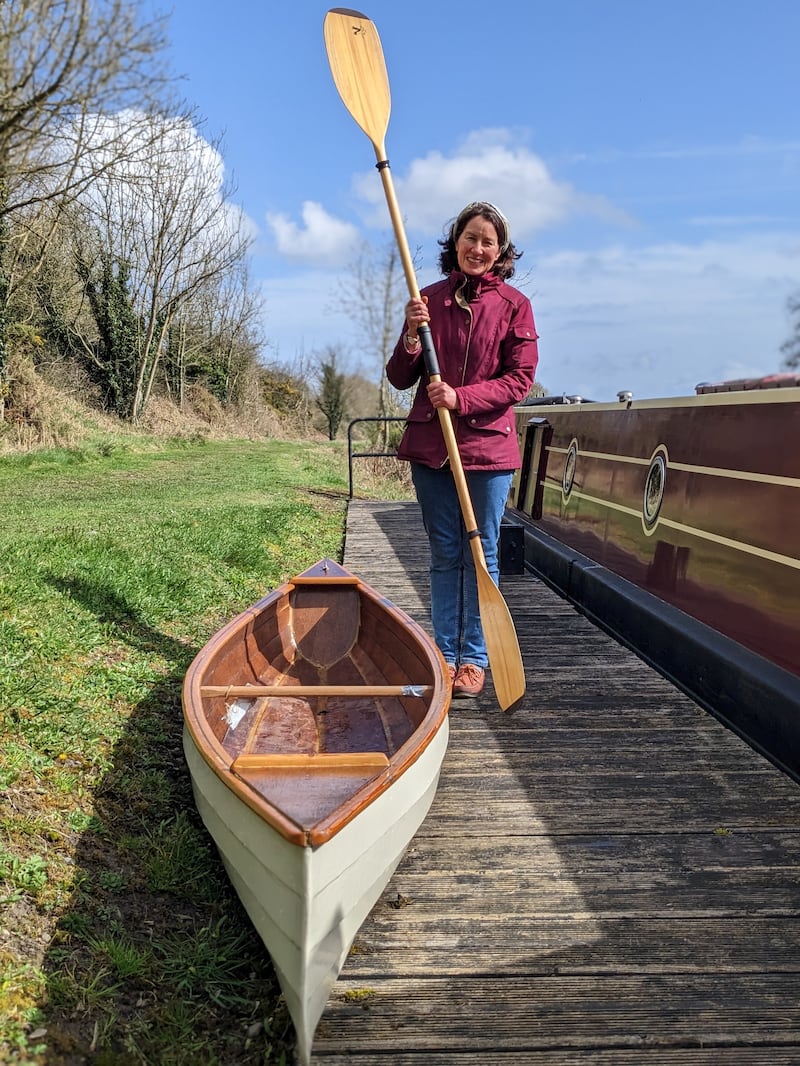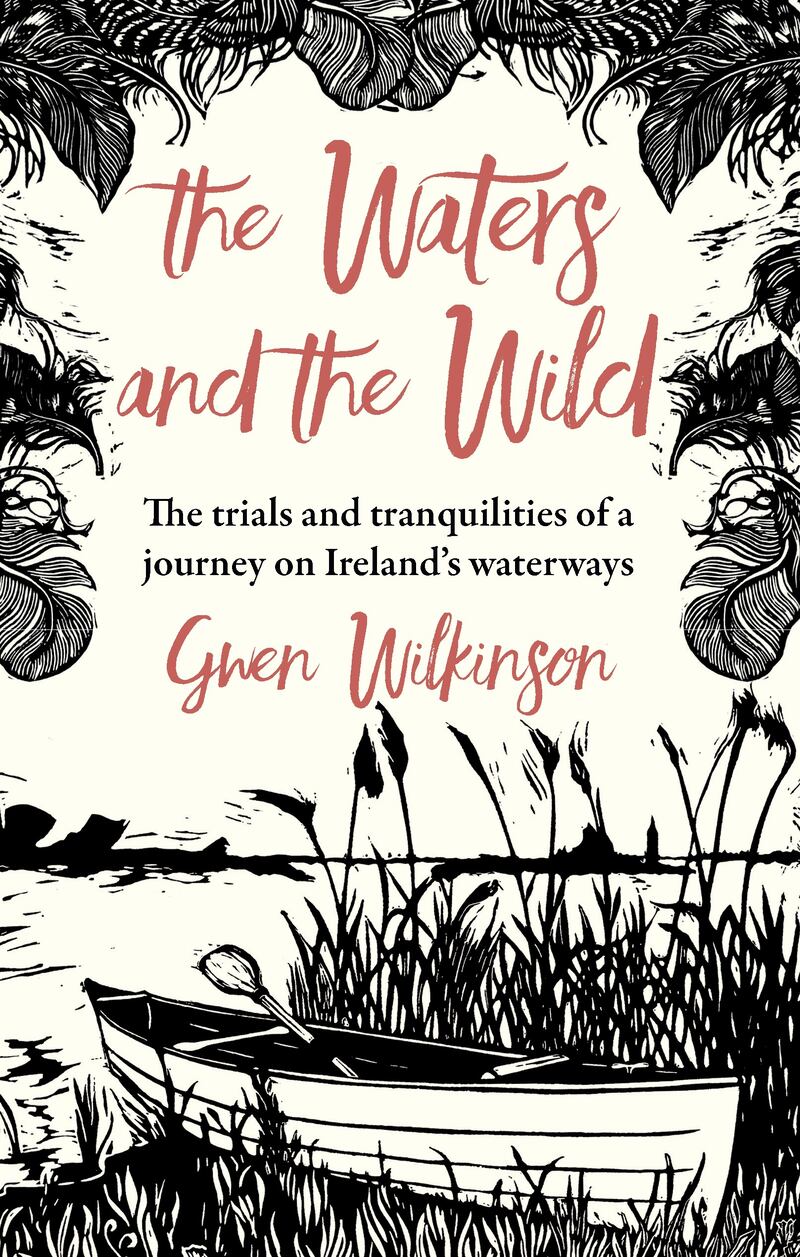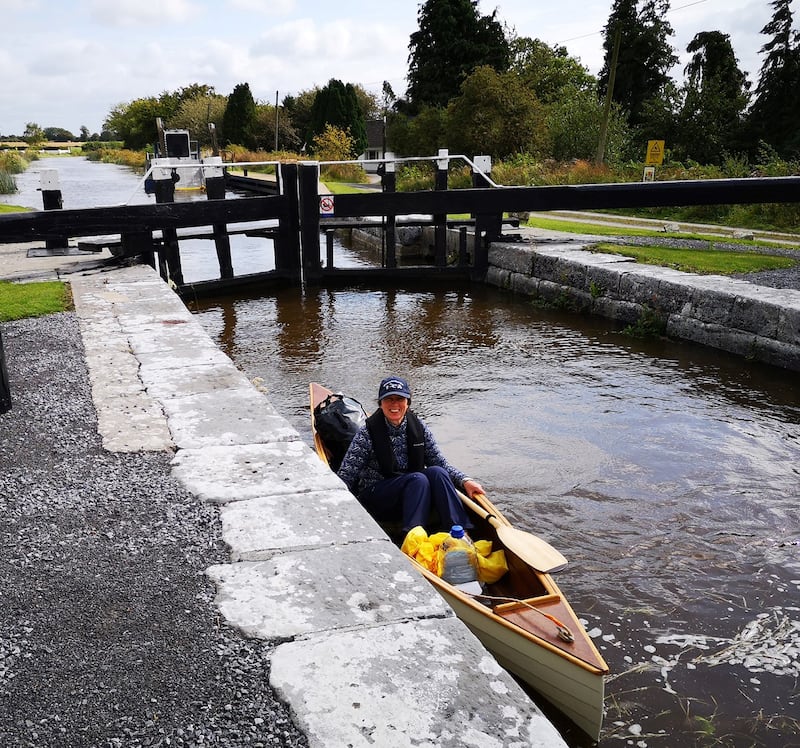The plan was simple: build a canoe and paddle it the length of Ireland along a network of rivers and canals.
In modern English, the word “odyssey” describes a long journey or spiritual quest marked by many changes of fortune. Such voyages are elemental in the ancient Celtic tradition of immrama and echtrae ‒ the Gaelic word “ioramh” meaning “to row about”. I have a weakness for voyage tales. Growing up, I consumed countless books about the sea and the many great oceanic adventures, from Thor Heyerdahl’s Kon Tiki voyage to Dame Naomi James’s triumphant tale as the first woman to sail solo around the world. I ran away with a sailor when I had just finished a degree at university. Hungry for adventure and impatient to escape the confines of life on a small island, I set off to travel the length and breadth of the world’s great oceans.
For most of my 20s, I worked and lived on racing yachts. Sailing on the high seas was an addictive way of life-exotic and exciting, with a whiff of danger. Then, after several years, I turned my back on the nomadic lifestyle of a sea gypsy, returning to live and work in Ireland. For a while I was content with life until familiar yearnings came knocking at my door. A day trip down the river Barrow in a hired canoe rekindles my spirit of adventure. Gently paced and physically undemanding, the voyage is the essence of slow travel. The simplicity of the adventure and the sense of escapism it invokes is revelatory. I am transfixed by the experience and crave more. Browsing maps, a plan slowly hatches to explore Ireland’s network of inland waterways.

The idea of building my own vessel greatly appeals to me. Research leads me to the plans for an open wooden canoe that seems to meet all my needs. In a freezing shed on the darkest of January days, I begin marking out the four rectangular sheets of plywood that will become the foundation of my vessel’s hull. After four months of labour, I have a strong and beautiful canoe. I call her Minnow.
READ MORE
That summer I set out on my own immram, launching Minnow in Northern Ireland and navigating a 400km voyage along a network of rivers, canals and loughs. My journey begins on the river Erne in Co Fermanagh; it follows the Shannon-Erne Waterway, which intersects with the river Shannon. Descending the Shannon, I exit the river at the junction to the Grand Canal and follow its course until I meet the river Barrow. The voyage is undertaken in stages and over the course of several months. Travelling for the most part alone, I wild-camp on river banks and canal towpaths and realise a long-held fantasy: castaway on a desert island.
[ Travellers to Unimaginable Lands by Dasha Kiper: Consider the carersOpens in new window ]
No two waterways are the same. Each has its own unique personality defined by the forces that have shaped it and the landscape through which it travels. The Erne exhibits all the features of a river carved by glacial forces. At 360km, the Shannon is Ireland’s longest river, its course punctuated by a chain of vast loughs – loughs Allen, Ree and Derg being the largest. Since ancient times, the Erne and the Shannon have served as important arteries of transport used by saints and pilgrims, traders and invaders. Travelling along these rivers is like tumbling through a portal into Ireland’s ancient past – from Boa Island’s enigmatic Celtic stone carvings to the hallowed grounds of Clonmacnoise and Devenish.

The artificial waterways of the Grand Canal and Barrow Line are equally enchanting. Excavated by human hands, these slow-flowing and narrow channels cut straight through the raised bog lands of Ireland’s heartland. Bogs are places I have generally bypassed, so my expectations are low when I set off on this leg of the journey. I am unprepared for how I will fall under their enchanting spell. These once-busy thoroughfares, on which horse-drawn goods barges and passenger boats commuted, are today corridors of immense wildlife diversity and a welcome escape for walkers, cyclists and boaters.
River banks and canal towpaths have established themselves as important habitats for nature ‒ they teem with life above and below the waterline. The towpaths on either side of the Grand Canal are endless borders of wildflowers ‒ vetch, water mint, hemp agrimony, valerian, devil’s bit scabies, mallow and meadow sweet to name a few. Purple loosestrife, yellow flag irises, orchids and water forget-me-nots flourish along the margins of the Shannon and the Erne. Paddling into Pollardstown Fen in Co Kildare, I explore a Garden of Eden where crystalline waters bubble up from tufa springs and stream beds undulate with thriving forests of oxygenating plants ‒ hornwort, milfoil, bottle brush.

The low perspective and silent passage of a canoe immerses the traveller in the waterway’s habitat. I become absorbed in the waterscape, listening, watching and savouring the wildlife around me. On the Erne and the Shannon, I encounter great crested grebe, lapwing, redshank and shoveler duck. The high banks of the Barrow and Shannon-Erne Waterway are the ideal habitat for the kingfisher; I give up counting sightings after a while. The grey heron is a ubiquitous presence on all waterways. These wildlife encounters alter the course of my creative urge and inspire the series of illustrations featured on the pages of my book.
In recent years there has been growing recognition of the value and importance of our waterways as a public amenity and recreational resource. Much effort and money have gone into making stretches paddle-friendly; slipways and access points at locks have been added. Waterways Ireland has produced Blueways trail maps for anyone setting out in a canoe or stand-up paddle board. The experience of getting out on the water is liberating and uplifting. Freed from the oppressive weights of anxieties and indecision, I can always feel a subtle revitalising of mind and body taking place. Of course, there are days of rain and hardship, but when wind and current are in my favour and canoeing is easy work, I believe I could paddle on forever.

[ YA fiction: Fragmented time, censorship and an utter wagon of a teacherOpens in new window ]
As my adventure unfolds, I learned about the lives of historic icons such as Maura Laverty (author and playwright), Jane W Shackleton (photographer) and Mary Ward (pioneering microscopist), women who have left their mark on Ireland’s cultural landscape, whose paths happened to intersect with mine. Throughout The Waters and the Wild I profile a cast of individuals – historical, mythological and contemporary – whose contributions to the fields of nature, science, environmental conservation and the arts are often overlooked. I hope relating their stories will prove as inspiring to others as they are to me.
Minnow has reached the boundaries of her world when I paddle into St Mullins on the river Barrow. It is by no means the end, however. Drifting down the Barrow, a sketchy plan takes shape in the recesses of my mind, a plan that will take me out to sea and far horizons. The canoe is safely stowed at home for the time being. I have a new boat, a traditional wooden daysailer that I will launch this year.
The promise of adventure grows ever more real. I can’t wait to see where the wild waters take me.
The Waters and the Wild by Gwen Wilkinson is out now
-




















